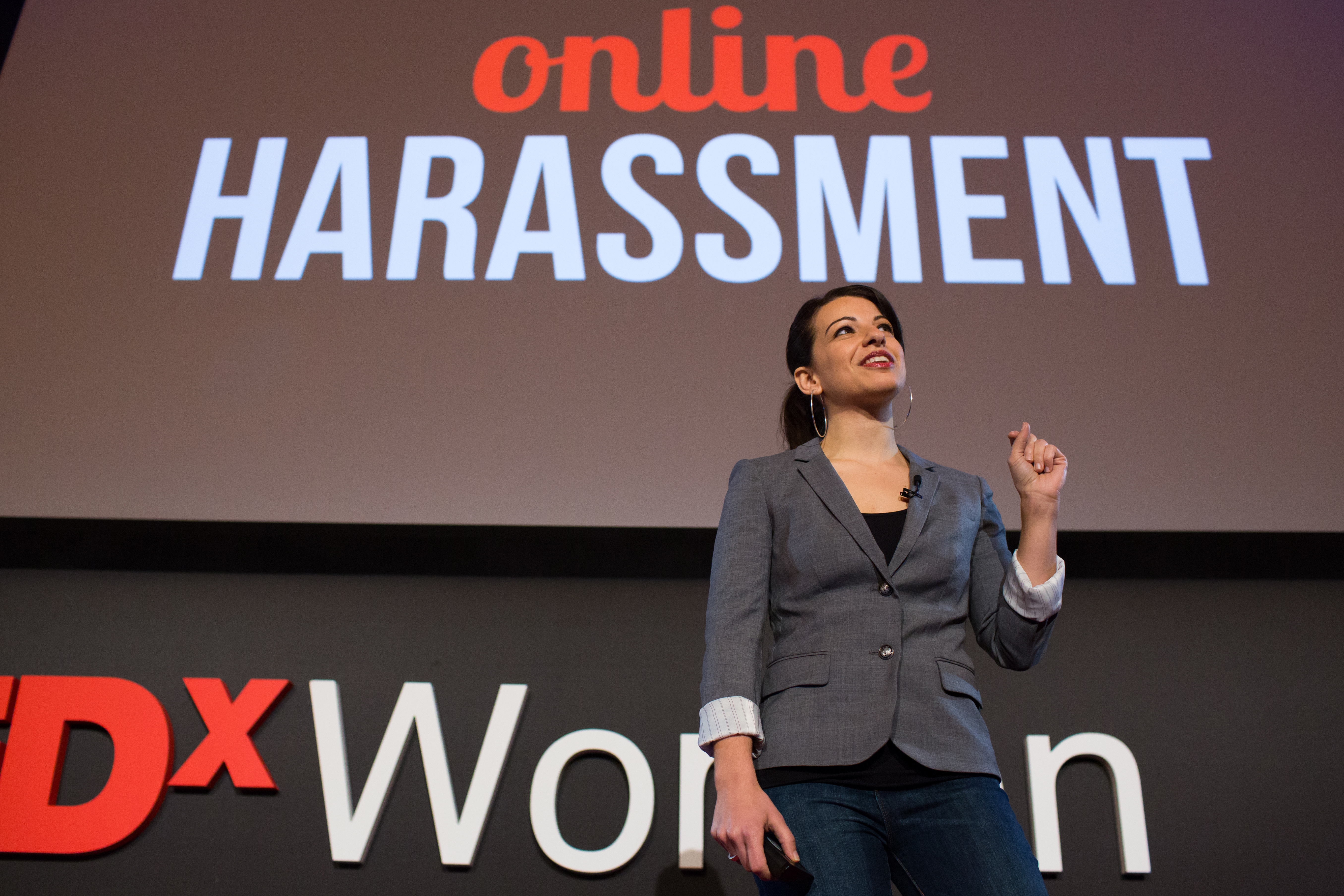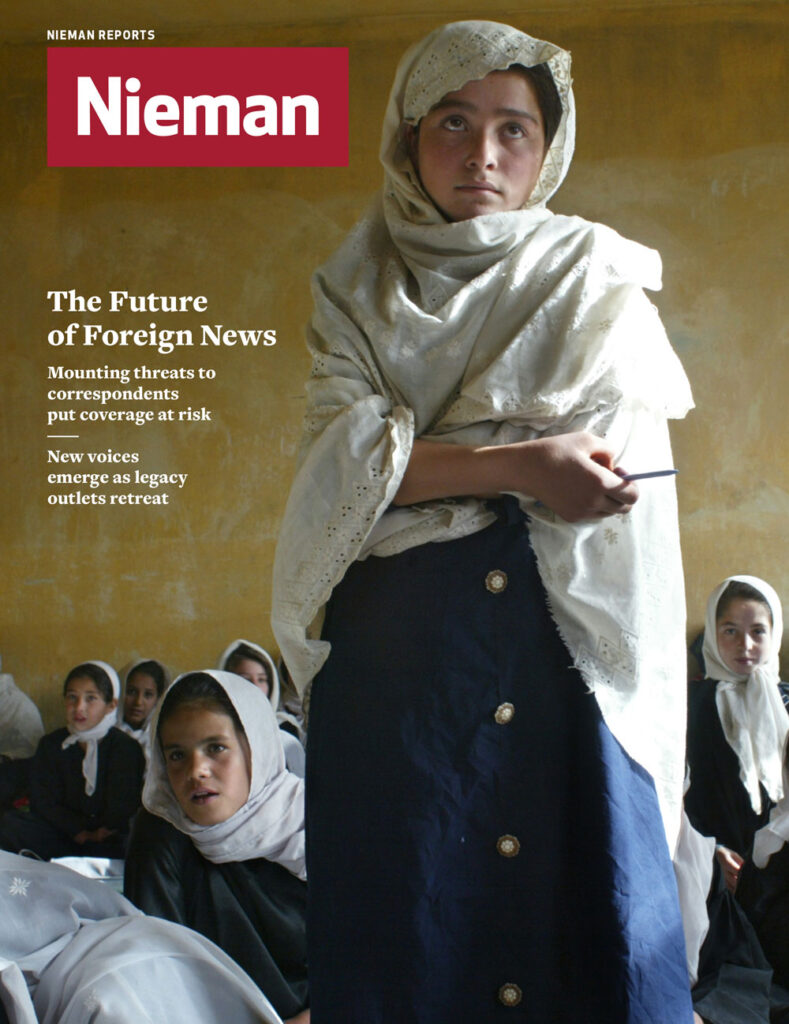Actually, it’s about ethics in games journalism.” Earlier this year, this simple sentence came to encapsulate a vicious online debate. Was the social media storm known as “GamerGate” an honest attempt to expose the cozy relationship between the video games industry and the reporters who cover it—or simply an excuse to harass women on the Internet?
Whatever your view on GamerGate—and, like many online controversies, its details are complex and convoluted—there is one thing on which both sides agree. The rise of social media has made journalists more open to accusations of bias, as their connections are now easier to trace. We now talk with potential sources openly on Twitter. We might be Facebook friends with public relations and press officers on our patch. From our online CVs and archived stories, anyone can trace our favored topics and the angles from which we cover them.
Alongside this, it has never been easier for readers to get in touch with journalists—and to encourage others to do so. The media might refer dismissively to “Twitter storms,” but responding poorly to outrage over ethical lapses—whether the anger is genuine or confected—can cause lingering reputational damage. For individual writers, being the focus of an online “swarm” can be a painful, even traumatic, experience.
We can draw some lessons from the saga known as GamerGate. It began when a 24-year-old Eron Gjoni wrote a rambling blog post about the acrimonious breakup of his relationship with a game developer called Zoe Quinn. His cause was taken up by users of the website 4chan—the image board that spawned LOLcats and the hacker group Anonymous—who spread the (false) rumor that Quinn had traded sex with Kotaku writer Nathan Grayson in exchange for favorable reviews. This allegation was debunked by Grayson’s editor, Stephen Totilo, who pointed out that the writer had never reviewed Quinn’s game.
GamerGate eventually evolved into a sprawling, amorphous mess of allegations—and it resulted in death threats against Quinn and other women in the industry. One of the most prominent examples happened in October, when Utah State University received an anonymous e-mail warning that “the deadliest school shooting in American history” would take place if the school did not cancel a talk by feminist culture critic Anita Sarkeesian, whose YouTube series “Tropes vs. Women in Video Games” takes on gender issues in video games. Sarkeesian cancelled her appearance after being told that, under Utah state law, the school could not bar the audience from bringing guns to her talk.

That said, whatever its supporters’ true intentions, GamerGate did start a conversation about ethics in games journalism. As a result, several gaming websites updated their codes of practice. For example, Kotaku—a site that is part of the Gawker group—has banned its writers from contributing to crowdfunding appeals for independent games, in case they are later asked to review them.
In 2007, Sarfraz Manzoor suggested in The Guardian that most writers knew the subjects that most reliably generated online anger. The ideal story “would probably combine Islam, Israel and 9/11 conspiracy theories with immigration, feminism and [London Mayor] Boris Johnson. And it would be written by Richard Dawkins.” But the first lesson of GamerGate is that what might prompt an angry mob is difficult to predict, given the potential viral nature of anything published online. A whimsical self-deprecating column or an op-ed full of sarcastic hyperbole might not trouble a print audience familiar with the writer’s style—but a casual reader might feel very differently. “All news outlets now surely know you don’t start a fire and walk away” is how Columbia University journalism professor Emily Bell puts it. “The larger problem is not always knowing what is combustible.”
She cites the outing of an online troll by Sky News as an example. The troll, Brenda Leyland, was found dead soon after the piece aired. It was initially reported as a suicide, although the postmortem examination was inconclusive. Throughout the backlash, Sky News did not comment, saying it would be “inappropriate” while a police investigation was going on.
In other circumstances, however, failing to respond—or responding poorly—simply fuels the controversy. In the age of the screenshot, editing or deleting the offending article is unlikely to solve the problem and could even provoke a larger backlash. Perhaps the biggest challenge is the speed at which a Twitter storm can ignite.
“Prior to the rise of the real-time social Web, we only really experienced these problems through much more contained mechanisms, like comment threads or e-mail campaigns, both of which you could exert some control over,” says Bell, who edited The Guardian’s website before moving to America. She adds that negative feedback is “an institutional challenge as well as an individual one these days.” It is also an equality issue, as research by the British think tank Demos shows that among journalists, women receive three times as many abusive tweets as men.
While journalists cannot control the response on Twitter, they can perhaps take some of the heat out of a social media storm by responding swiftly and publicly. Margaret Sullivan, The New York Times’s public editor, is known for her deftness in doing just that. “I would say that in many cases where there’s a major social media uproar, there is something there,” she says “[although] it might not be of the magnitude or the level of alarm that’s being assigned to it.”
One such case was the recent criticism of a New York Times piece about the executive producer of the television series “How to Get Away With Murder” and other successful dramas, which began: “When Shonda Rhimes writes her autobiography, it should be called ‘How to Get Away With Being an Angry Black Woman.’” Readers felt that invoking this stereotype was offensive; but the writer, Alessandra Stanley, says in an e-mail that she referenced it precisely to praise Rhimes for overturning “trite, insidious clichés about race on television.”
In her column responding to the huge backlash the piece provoked, Sullivan was careful not just to ask for an explanation from Stanley, but to seek comment from her editors, too. She also wrote about the larger problem of the lack of racial diversity in the culture team. Was it a deliberate decision to switch the focus from the personal to the structural? “Yes, the impact on individual writers of such swarming can be pretty tough,” says Sullivan. “A writer can really feel under siege in a very debilitating way.”
Stanley declined to be interviewed for this piece, saying in an e-mail that she has learned “whenever there is this kind of social media tempest, anything the subject says about it just inflames it further. This ado was certainly the most intense one I’ve experienced.” Other journalists say much the same. When complaints come from dozens of people at once—some of whom have a sketchy understanding of the original grievance—trying to respond individually on Twitter is impossible and may even make the situation worse.
For Sullivan, this is the biggest change from the pre-Internet landscape: any comment or explanation offered by a newspaper is “likely to be parsed and found wanting, and thus to generate the next level of uproar.” She now makes a point of trying to respond to the underlying issue in a considered post, acknowledging—but not focusing on—the online swarm.
According to Bell, organizations should think about having an “outward-facing presence” to deal with complaints—someone at one remove from the writers or editors involved in a controversial piece. Such employees go by different names—public editor, ombudsman—but the roles are similar.
Having a dedicated staff member to deal with complaints is particularly important when you consider the sheer numbers that can be involved. Stephen Pritchard, the readers’ editor at The Observer, recalls that he received 1,000 e-mails in 24 hours after the newspaper published an op-ed by columnist Julie Burchill that referred to transsexuals as “shemales” and “bed-wetters in bad wigs.” Burchill has a long history as a purveyor of deliberate provocations.
One of the main lessons from the incident, in Pritchard’s view, is “not to fall for the numbers game. Fifty identical e-mails are not a cause for panic, but 50 thoughtful and considered protests on the same topic deserve attention.”

It’s a point echoed by Gawker’s editor in chief Max Read, whose site was one of those targeted by GamerGate for taking an allegedly “anti-gamer” stance. He says he is currently the subject of an online petition to have him removed from his job; the petition site automatically e-mails him every time a signature is added. “It’s not persuasive, it’s just annoying,” he says.
Read is much more impressed by individual e-mail complaints that make a “good faith case” against a piece than by Twitter storms, which can often involve an element of performance. “I’ve never had my mind changed about a story on Twitter,” he says. “Convincing arguments about stories and ideas tend to come at lengths longer than 140 characters, and the public nature of Twitter debates favors point-scoring and attention-getting.”
That public nature is exactly what attracts activists, of course—stories snowball as the volume of conversation around them increases, and hashtags make it easy to track a growing controversy. The challenge for news organizations is to pick out the valid complaints from the surrounding noise, and to find a way to give a coherent answer.
Unfortunately, there is little guidance from professional bodies on how journalists should deal with accusations of unethical behavior made online. The subject is not mentioned in the Independent Press Standards Organisation code recently published in Britain, nor in its American counterpart, issued by the Society of Professional Journalists (SPJ). “The code that went before was from 1996, the same year The New York Times website went online,” says Andrew Seaman, chairman of the SPJ Ethics Committee. The updated version acknowledges that “journalists no longer just exist behind a byline—they typically have some kind of social media presence.” Nonetheless, because the new code is designed to be “platform neutral,” it does not offer specific advice for social storms.
For Seaman, the key advice contained in the code is this: Be transparent. Avoid conflicts of interest, and disclose any that are unavoidable. “If there’s something you can’t separate from who you are, in your work, you need to be transparent about that,” he says. In earlier eras, he adds, it was only columnists and other “marquee journalists” whose personal lives were known about by readers. Now, through social media, LinkedIn, or Google, most journalists’ personal histories and archived articles are traceable, making it easier to gather evidence for accusations of bias.
However, there is sometimes a mismatch between readers’ expectations of what constitutes bias and the generally accepted standards among writers and editors. When the freelance journalist Jenn Frank wrote about GamerGate in September, she asked The Guardian to disclose that she had publicly supported Zoe Quinn’s work in the past, although she had never previously written about the developer. The newspaper removed this information, ruling that it “did not fulfill the criteria for a ‘significant connection’ in line with The Guardian’s editorial guidelines.” After the piece was published, however, Frank was subjected to such a barrage of criticism that she announced her “retirement” from games journalism, and she successfully lobbied the newspaper to include the full disclosure statement.’
The challenge for news organizations is to pick out the valid complaints from the noise
Elsewhere in GamerGate, journalists who wrote pieces on the subject were added to crowdsourced lists of enemies. Alex Hern, tech reporter at The Guardian, says one of his articles was added to a Google spreadsheet documenting “the anti-male cabal in gaming journalism.” Writers on such lists were targeted for protests, boycotts and letter-writing campaigns to advertisers on the sites that hosted them.
Such online swarms undoubtedly take a toll on free speech. Gawker’s Read says many journalists treated GamerGate with kid gloves because of the effect it would have on their online experience: “Which, just to be specific, is hundreds of tweets directed at you for weeks, at best accusing you of ‘bias journalism’ and at worst threatening you with violence.” Bell is concerned that reporters may be censoring themselves through fear of online retribution: “The chilling effect of collective outrage does curb free expression in the exchange of ideas. Perhaps you could argue that’s no bad thing, but it has a kind of moral conservatism attached to it.”
What about the other side of the equation—what does it feel like to upbraid a journalist or news organization on Twitter? “It feels rather draining,” says author Jeremy Duns, who has uncovered several examples of plagiarism and sockpuppeting (using anonymous accounts to attack your rivals) by prominent journalists. He was involved in uncovering the plagiarism of former Independent columnist Johann Hari, who had taken quotes interviewees had given to other journalists, or written in books, and pretended they were said to him. Duns was dismayed that Hari’s ideological allies—other left-wing commentators and celebrities—were slow to acknowledge he had done anything wrong.
This feeling of industry chumminess drives many Twitter storms, according to Duns. People believe that without a storm, journalists’ tendency is to rally round and protect their own. This is what many GamerGaters say. When The Washington Post’s Hayley Tsukayama asked supporters what the movement was about, answers included “a consumer revolt against proven collusion and agenda-driven journalism.”
A similar analysis is offered by @crushingbort and @blippoblappo, two anonymous Twitter users who have accused both BuzzFeed’s Benny Johnson and CNN’s Fareed Zakaria of repeated plagiarism. Johnson was fired from BuzzFeed. Seven of Zakaria’s articles at Newsweek now carry editorial warnings about attribution.
Like Duns, @crushingbort and @blippoblappo say they have been dismissed as cranky outsiders or obsessives. “We can sympathize with reporters reluctant to take anonymous criticism from Twitter to heart,” they write in an e-mail. “Anyone who’s read a journalist’s tweets can see a number of unfriendly replies that can be boiled down to, ‘I don’t like your [perceived] politics.’ But if criticism can be independently verified, then—regardless of whether it came from anonymous tweeters or a sealed envelope slipped under a reporter’s door—it shouldn’t be dismissed.”
Zach Schonfeld, a Newsweek reporter who wrote about the internal investigation into Zakaria’s work, says that his description of the pair as “self-styled watchdogs” was not intended to be pejorative: “Their anonymity doesn’t change the fact that their allegations are worth paying attention to.” He adds, however, that Newsweek would prefer whistleblowers to contact them via e-mail—which is what @crushingbort and @blippoblappo did after it became clear the publication was willing to listen to them.
Perhaps, then, the only real way to distinguish those with genuine grievances from those indulging in performative scolding is by asking: what does the complainant want? Social media is perfect for letting off steam and drawing attention to an issue, but change is more likely to come from a nuanced discussion out of the glare of an angry mob. Yet unless media organizations offer a way for their readers to make constructive criticisms—and to make them feel those criticisms are taken seriously—there will be no end to the Age of the Twitter storm.




